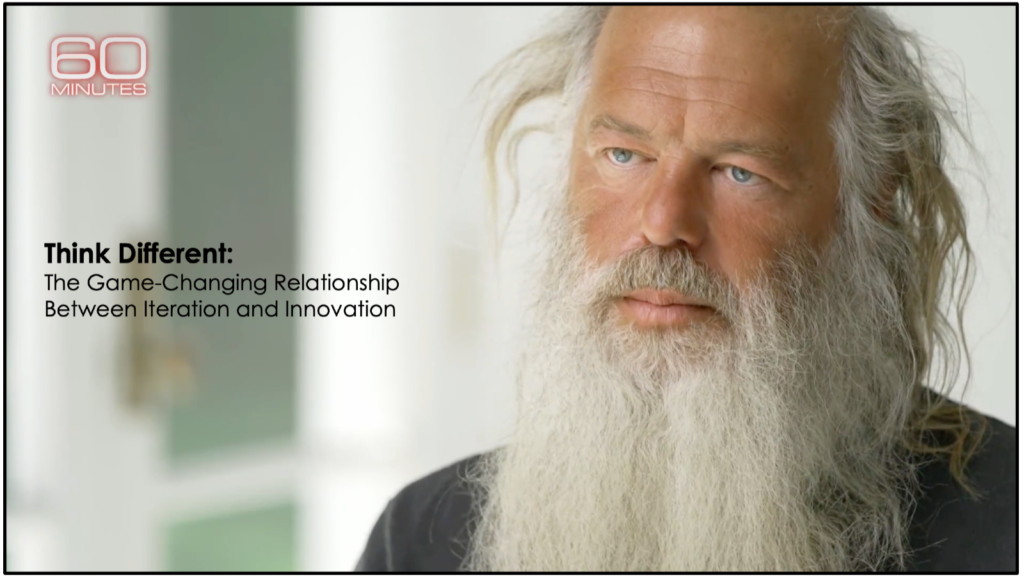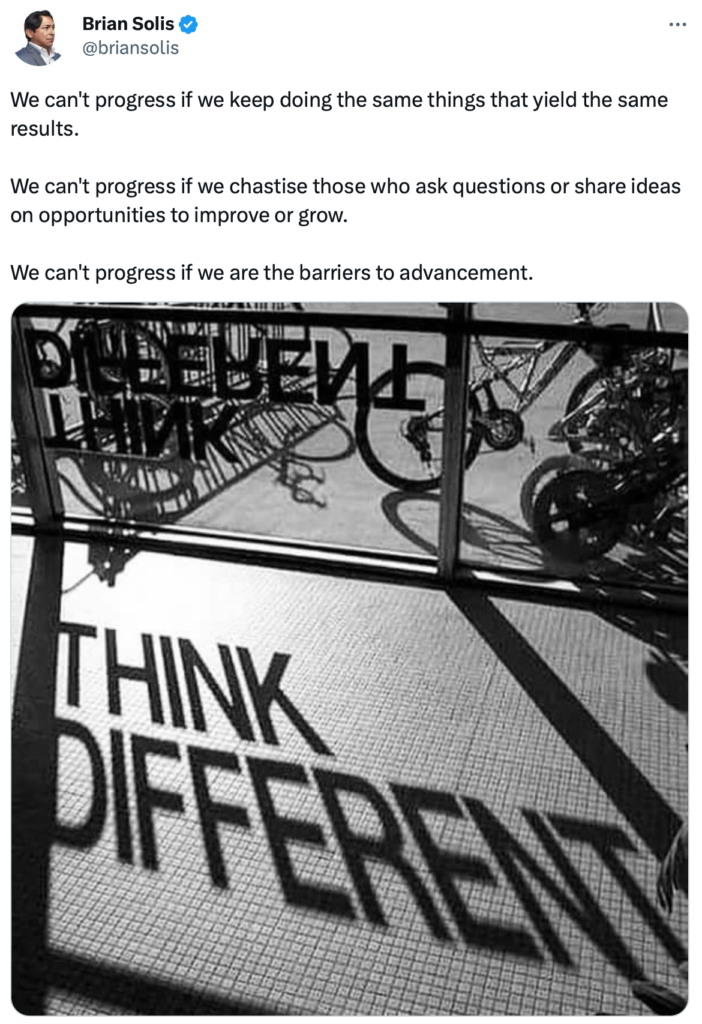When most people describe innovation in their work or share their vision of the “art of the possible,” what they’re really describing is iteration. let me explain…
Every company faces two opportunities to move forward. The balance of the two requires investment and care to grow and prosper in a never-ending future.
1) Iterate: Embracing new things to improve, enhance, enhance, optimize and expand what we are really good at. Note: Not everything you do today should carry you into the future. Some things become outdated or obsolete. They need to reimagine for a changing world where tastes, trends, times, behaviors, expectations and standards change.
2) Innovation: Embrace new things, explore opportunities to create new value, test and learn, and develop ideas for business/market impact.
I want to share with you a 17 second clip featuring legendary producer Rick Rubin. It’s a mind-changing perspective and stimulus”think different” (kudos to Apple for those who suggested adding “ly”).
In an interview with 60 Minutes, Rubin shared his approach to making music, which at first sounds counterintuitive, almost absurd, because it goes against everything we think we know, especially how we think about work.
“The audience is last in line,” Rubin shared with Anderson Cooper on 60 Minutes.
Cooper’s reaction reflected what most people thought at the time, “What!? How is that possible!?”
“Audiences don’t know what they want,” he explained.
That’s what makes it different.
“The audience just knows what happened before,” he noted.
It’s a powerful, philosophical example of how to be different.
It starts with reflecting on our next steps. Are we venturing into familiar territory, or exploring unknown territory. One is evolution. The other is revolution.
The audience just knows what happened.
Who is our audience? Who are our inspirations? How can we best serve them? Where else can we take them?
While nothing is certain in life, there is a sense of confidence or security in working towards something familiar, building upon it, enhancing and optimizing it, improving it. But that’s iteration. Iterative value loops are limited. Meaning, it’s only a matter of time before margins shrink, growth stagnates and disruption arrives.
Groundbreaking Business Coach and My Colleagues 100 coachesMarshall Goldsmith famously observed in his book best seller“What got you here, won’t get you there.”
It’s a powerful, humbling reminder that we need to 1) do things differently and 2) start the next phase of growth differently. This is innovation. It can help you enter a new value cycle.
The relationship between iteration and innovation is benign.It accepts the reality that what got us here won’t keep us here, and Knowing what got us there doesn’t keep us there.
In your work, look for opportunities to give your audience a better understanding of what they know. But remember, that’s iteration, and it’s of limited value.
Also, explore opportunities to provide your audience with content they have never heard before. This is innovation. It is elusive, but its rewards are relevance and importance.
Like yin and yang, iteration and innovation must coexist in harmony.
Ask yourself, before every decision, before every strategy and plan, before every action, is this iteration or innovation? If there is only one, it must be balanced by the other as part of the process. You, your organization, your culture, have to be interested in both.
as steve jobs disclose Regarding Apple’s innovation strategy, “Some people say give customers what they want, but that’s not my approach. Our job is to figure out what they want before they act.”
Allow yourself to wonder, imagine, speak out. This is how you think differently, grow and thrive, especially in times of uncertainty.


